| Saansad Adarsh Gram Yojana |
|
| World Lion Day |
|
| Security Sockets Layer Certificates |
|
| Keralam: Proposed Name of Kerala |
|
Context:
More about the news:
National Social Assistance Programme(NSAP):
Objectives of NSAP:
Scheme components:
News Source: Indian Express
Context:
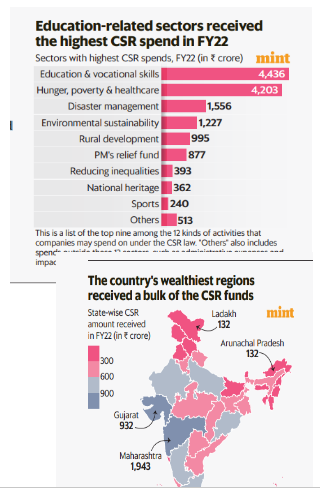 Indian firms’ spending on corporate social responsibility (CSR) remained flat in 2021-22, a new analysis by primeinfobase.com showed.
Indian firms’ spending on corporate social responsibility (CSR) remained flat in 2021-22, a new analysis by primeinfobase.com showed.
About Corporate Social Responsibility (CSR):
Sectors With Highest CSR Spends:
State Split:
Preferred Routes
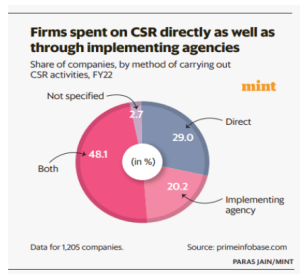
Context:
More About the news:
About Meira Paibi:
What social role do the Meira Paibis play?
About Assam Rifles:
News Source: Indian Express
Context:
Recently, the two-day meeting of the Amazon Cooperation Treaty Organization (ACTO) began in Belem, Brazil.
More on News:
About Amazon Cooperation Treaty Organization:
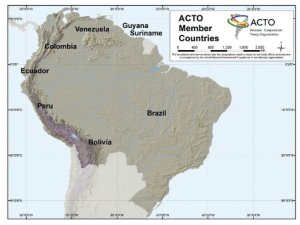
About The Belem Declaration:
Amazon Rainforest:
|
News Source: DTE
Context:
About the Bill:
Key Provisions of the bill:
| Broadbasing coastal aquaculture definition: |
|
| Promoting newer forms of environment friendly aquaculture: |
|
| Biosecurity: |
|
| Exemptions: |
|
Coastal Regulation Zone:
Coastal Aquaculture Authority Act (CAA)2005:
|
News Source: PIB
Context:
More about the news:
About the Pradhan Mantri PVTG Development Mission:
Who are PVTGs?
Identification of PVTG:
Government of India follows the following criteria for identification of PVTGs:
News Source: PIB
Context:
Recently, the Government of National Capital Territory of Delhi (Amendment) Bill, 2023 was passed by Parliament.
More on News:
| PYQ:
Q. Whether the Supreme Court Judgment can settle the political tussle between the Lt. Governor and elected government of Delhi? Examine. (2018) |

Timeline on Key Legislations and Judgements on Delhi:
| Year | Development |
| 1956 |
|
| 1991-92 |
|
| 2015 |
|
| 2016 |
|
| 2018 |
|
| 2019 |
|
| 2021 |
|
| 2023 |
|
Need of the Bill:
Key Features of the Bill:
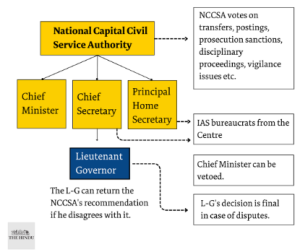
| The GNCTD (Amendment) Ordinance, 2023 | Changes in the 2023 Bill |
|
|
|
|
|
|
|
|
Verdict of the Supreme Court (2023): GNCTD vs Union of India cases
About Article 239AA of the Constitution:
|
Concern with the Bill:
Conclusion:
In the process of resolving the situation, it’s crucial for everyone involved to show dedication to constitutional principles. This includes valuing democratic governance, the division of powers, and the rights of elected officials. Adhering to the constitutional framework will establish a strong basis for a just and clear resolution.
Administration of UT in India:
|
News Source: The Hindu
Context:
Recently, the Centre for Science and Environment (CSE) organized a webinar titled ‘The Crisis of Antibiotic Research and Development’ to discuss the issue of Antimicrobial Resistance (AMR).
More on the News:
About Antimicrobial Resistance (AMR)

Global Severity of AMR:
Severity of AMR in India
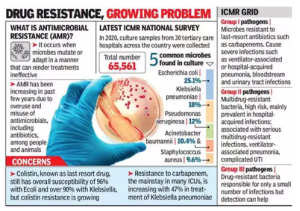 An Indian Council of Medical Research (ICMR) study in 2022 showed that the resistance level increases from 5% to 10% every year for broad-spectrum antimicrobials.
An Indian Council of Medical Research (ICMR) study in 2022 showed that the resistance level increases from 5% to 10% every year for broad-spectrum antimicrobials. Causes of Antimicrobial Resistance (AMR) in India:
Steps Taken by India to Prevent AMR:
Way Forward
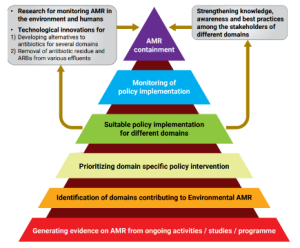 It brings together multiple sectors and stakeholders to work together in designing and implementing programmes, policies, legislation and research to attain better public health outcomes.
It brings together multiple sectors and stakeholders to work together in designing and implementing programmes, policies, legislation and research to attain better public health outcomes.| Short-Term Action Points | Long-Term Action Points |
|
|
Global Efforts in Prevention of AMR
|
News Source: DTE
SC Verdict on Newsclick Shows Adherence to Due Pro...
Stay Invested: On Chabahar and India-Iran Relation...
Credit Rating Agencies, Impact on India’s De...
Catapulting Indian Biopharma Industry
Globalisation Under Threat, US Import Tariffs Have...
Global Report on Hypertension, Global Insights and...
<div class="new-fform">
</div>
